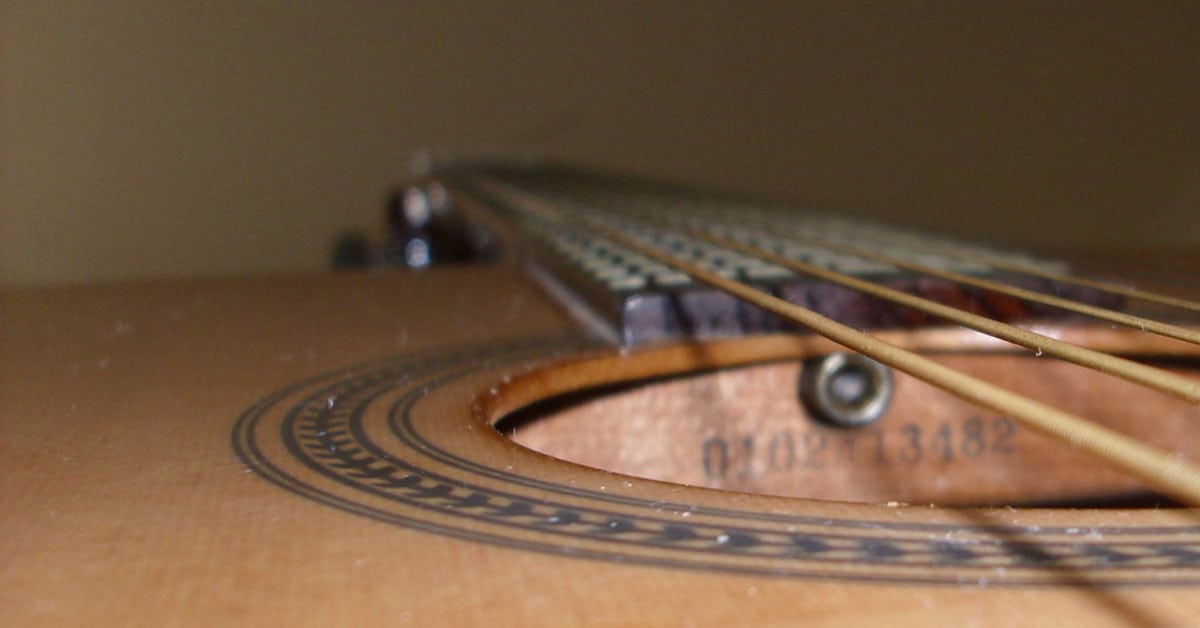There are three main ways you can manipulate the sound of your electric guitar to try and make it sound like a classical guitar.
You can adjust the electric guitar and amp equalizer settings, use an acoustic guitar simulator pedal, or use a MIDI guitar controller and modify the MIDI signal to sound like a classical guitar.
From the sound clips, you will hear in the videos included below. the MIDI guitar controller produces the best result by far, in making an electric guitar sound like a classical guitar.
Each of these three options will be explained and discussed, with sound examples provided where available.
Modifying Electric Guitar Settings and Amplifier EQ Settings
The primary way to try and adjust an electric guitar’s sounds is through the settings of the guitar itself, and the amplifier it is plugged into.
Pickup Selection
Depending on your guitar setup, the mid/neck combo is likely to be the best option. It takes away some of the harshness of the tone, to a more mellow sound.
Guitar Volume & Tone
Have volume and tone knobs all scaled back to around five, or halfway. This way they are still sending enough signal, but the edge is taken off of the mids and the low end is coming through more than the high-end frequencies.
Guitar Amplifier Settings
To give yourself the greatest chance of making a classical guitar sound with an electric guitar you want your guitar amplifier to be on the cleanest and clearest setting available. In terms of EQ settings, but bass and mids at five, with the treble slightly lower, on three. From here you need to test and adjust and experiment with what adjustments get you closer to the sound of a classical guitar. You could also experiment with a little bit of reverb or echo/hall delay might add some texture to the sound.
Personally, I do not think you will be satisfied with how well you can make an electric guitar sound like a classical guitar using this method, so you will want to consider the next two suggestions carefully.
Acoustic Guitar Simulator Pedal
An acoustic guitar simulator pedal, as the name suggests, is a guitar pedal designed to try and simulate an acoustic guitar sound. There are multiple different options available, but we will briefly cover two of the more popular versions.
But please keep in mind, even though these are acoustic guitar simulators, they do not specifically claim to make a ‘classical guitar’ sound.
BOSS Acoustic Simulator Guitar Pedal (AC-3)
The BOSS acoustic guitar simulator uses the well-respected COSM Technology (Composite Object Sound Modeling) that makes a digital modal of the desired sound and converts the received input into that sound.
There are four key settings available:
- Standard (similar to a Dreadnought Acoustic)
- Jumbo (Similar to a Jumbo Oversized guitar)
- Enhance (A Sharp tone to stand out over a band)
- Piezo (Similar to a rounded back style guitar, e.g. Ovation)
In addition to these four options, there are three knobs to adjust reverb, body, and top. This video gives a walkthrough of the sound options and demonstrates each one so you can clearly hear if they will be what you are looking for. Though I doubt you will find any of them to sound anything like a classical guitar.
Mooer Acoustikar Acoustic Guitar Simulator Micro Pedal
An alternative to the BOSS Acoustic Simulator Guitar Pedal is the Mooer AcoustikarAcoustic Guitar Micro Pedal. It includes a switch to easily move between different acoustic sounds as well as some finer EQ customization. This video goes through each sound, so you can hear exactly how each of the different presets sounds. Like the BOSS AC-3, I do not think you will find this an adequate classical guitar alternative. However, I do think you will be satisfied with the sound provided by the third and final option I discuss.
MIDI Controller With Accompanying Synthesizer
A third option you can consider, and what I think is the most promising, is a guitar MIDI controller with an accompanying sound modeler /synthesizer.
To achieve this you need two components, the MIDI controller which you attach to your guitar, and then a guitar synthesizer to send the MIDI signal to for processing.
There are multiple products available to fit this purpose, but one specific option you can consider is the Roland GK3 pickup, and the Roland GR-55 Guitar Synthesizer.
From all of the options we have discussed in this article, this option does the best job of making an electric guitar sound like an electric guitar. This Youtube video shows you exactly how good it sounds. The 10 minute, 15-second mark of the video is where they demonstrate that sound of t classical nylon string guitar using the GK-3 and GK-55.
Final Thoughts
At the end of the day, there is no way to provide a realistic classical guitar sound, using an electric guitar.
You can modify your guitar and amps settings, and use whatever additional pedals and synthesizers you want, but you will not quite reproduce that pure classical guitar sound.
Though of all the options available to you, use of a guitar midi controller, going into a guitar synthesizer (such as the Roland GR-55), provides the closest thing to a classical guitar sound, coming out of an electric guitar.


